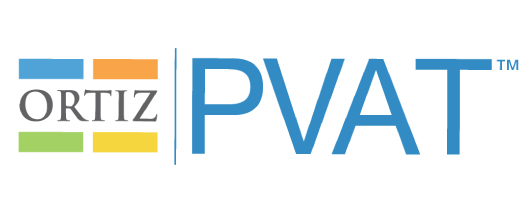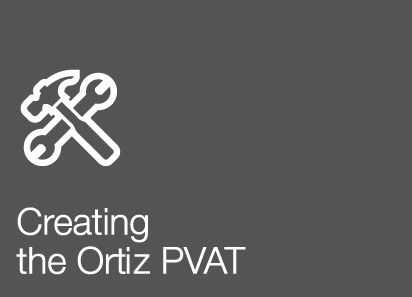- Technical Manual
- Chapter 1: Introduction
- Chapter 2: Theory and Background
- Chapter 3: Administration and Scoring
- Chapter 4: Scores and Interpretation
- Chapter 5: Case Studies
- Overview
- Case Study 1: Clinical Evaluation of an English Speaker Suspected of Having a Speech-Language Impairment
- Case Study 2: Progress Monitoring of an English Learner with Suspected Deficits in Verbal Ability and Language
- Case Study 3: Psychoeducational Evaluation of an English Learner with Suspected Specific Learning Disability
- Chapter 6: Development
- Chapter 7: Standardization
- Chapter 8: Test Standards: Reliability, Validity, and Fairness
- Task Instructions Scripts
Uses of the Ortiz PVAT |
Assessing an Individual
The Ortiz PVAT can be used during the assessment and diagnostic process as one component of a comprehensive assessment battery. It is ideally suited to the assessment of general language competence, as indicated by receptive vocabulary acquisition, and to assist in the identification of language impairments in both English speakers and learners. With highly engaging visual stimuli and the digital, entertaining game-like design, the Ortiz PVAT aids in establishing rapport and attenuates the anxiety level of the examinee when used as an initial element of a test battery.
As there is no reading, writing, or verbal responses required, the instrument can be used to assess receptive language ability in individuals with expressive language impairments, reading disabilities, or other disorders that affect speech (e.g., selective mutism, Autism Spectrum Disorder). Since vocabulary is one of the building blocks of language development (Fromkin, Rodman, & Hyams, 2014) and the detection of language delays typically involves evaluation of vocabulary milestones (Tervo, 2009), the Ortiz PVAT can be particularly useful in assessing cognitive and linguistic development of preschool children, as well as determining a child’s readiness for formal schooling.
When evaluating a native English speaker’s acquisition of vocabulary, the standardized score obtained from the Ortiz PVAT allows the evaluator to effectively compare the individual to a nationally representative reference group. When assessing an English learner, the same native English Speaker norms are used only to provide an indication of an English learner’s English language proficiency in relation to instructional level and grade-level expectations. For diagnostic purposes, however, the English Learner norms are used to provide a fair, “true peer” reference group to evaluate an English learner’s degree of English language development relative to others with similar exposure to English.
Moreover, given the close relationship between vocabulary, reading comprehension (Quinn, Wagner, Petsher, & Lopez, 2015), and general cognitive ability (in particular, crystallized intelligence or Gc; Carroll, 1993; Horn, 1998; Woodcock, 1990), uses of the Ortiz PVAT extend far beyond a general speech and language assessment. When used in combination with other assessment information, results from the Ortiz PVAT help guide diagnostic decisions, intervention planning, and ongoing monitoring of vocabulary growth and development. Results from the Ortiz PVAT can also aid in evaluating the appropriateness of other standardized measures administered in English or any evaluation situation involving an English learner (e.g., neurological assessment, learning disability assessment); minimal exposure to English is required to understand the task (the task instructions only [i.e., not the target words] have been translated into Arabic, Chinese, Russian, Spanish, and Vietnamese), and responses can be provided non-verbally (i.e., the examinee can simply point to, click, or touch a picture to indicate their responses).
Evaluating Instructional Requirements and Intervention Programs
Results from the Ortiz PVAT can inform decisions about the effectiveness of classroom instruction and various individual or group intervention efforts. For example, the Ortiz PVAT can be used to monitor the progress of students who have been identified as an English Language Learner (ELL; or a student with Limited English Proficiency; LEP) and have been placed in English-language development programs, with or without instructional modifications. By using the Ortiz PVAT to collect baseline data at the beginning of an intervention program and then subsequently at benchmark points throughout the course of instruction or intervention, it is possible to evaluate whether or not a particular teaching strategy or intervention program is yielding an increase in the individual’s English receptive vocabulary acquisition. The statistically equated alternate forms (Form A and Form B) allow for re-administration of the Ortiz PVAT within a short period of time while avoiding potential problems with practice effects. Results from these types of evaluations can be helpful in generating data to either support the continuation or termination of a language intervention program or teaching strategy, such as determining the appropriate point of exit of students from English as a Second Language (ESL) programs or placement in academic settings for native English speakers.
Use in a Research Context
The Ortiz PVAT can be used by researchers within the fields of speech and language pathology and psychology, or in any other specialty area with a focus on language (e.g., neuropsychology, neurolinguistics). Due to its inherently engaging design and brief administration time, the same utility described for assessing an individual is also applicable in the research context. Examples of its use in a research context include determining the appropriateness of English-based assessments, screening for early language delay, detecting language impairment, measuring language development among non-readers and individuals with expressive language difficulties, assessing receptive vocabulary as one aspect of reading and cognitive skills, tracking or monitoring vocabulary growth and development in the evaluation of intervention or teaching programs, as well as providing a general, proxy measure of language competence in English.
In addition, special attention was paid to the development and construction of the Ortiz PVAT to ensure that it offers various advantages for both clinical and research purposes. First, items were carefully developed and deliberately selected to measure vocabulary acquisition in a consistent manner across the development of very young children to youth and young adults, making it suitable for a wide range of individuals. Second, the Ortiz PVAT provides scores based on two diverse, nationally representative normative samples; these consist of native English speakers and English learners aged 2 years 6 months to 22 years 11 months, with the English Learner normative sample stratified additionally by length of exposure to English. Third, the Ortiz PVAT has exceptionally strong psychometric properties (see chapter 8, Test Standards: Reliability, Validity, and Fairness) that exceed typical requirements for research applications. Finally, results from the Ortiz PVAT can be aggregated and compared to other instruments of speech and language or cognitive ability due to the use of standard scores and percentile ranks.
| << Key Features of the Ortiz PVAT | Administration and Scoring >> |





